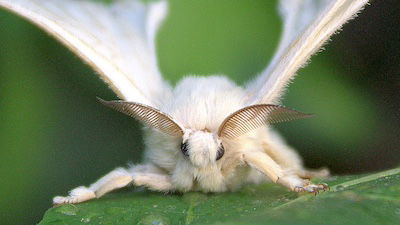Bats Inspire High-Tech New Flying Robots
April 17 was National Bat Appreciation Day. Though many people are none too fond of bats, most will admit they don’t mind bats cleaning up a few mosquitos. These flying mammals often get a bad rap as creepy or even scary, but few people realize that these nocturnal wonders are an engineering marvel and are even inspiring new technologies.
Meet Bat Bot
Researchers have been working on Bat Bot (or B2), a robotic lightweight flier designed to mimic the incredible aerial ability of a bat.1 Thin silicone wings are stretched over a carbon fiber frame, and a tiny onboard computer, five motors, and sensors allow the robot to fly autonomously.2 This unique design, copied from God’s creation, allows the Bat Bot to twist, cruise, dive, and maneuver in ways similar to a bat.
Bat Bot clocks in at just 3.3 ounces with an 18.5-inch wingspan. It can flap its membranous wings in sync as well as fold each wing and move each leg independently. Eventually researchers hope B2 will be able to hang upside down and perch right side up, just like its live counterpart. It can currently fly a distance of less than 100 feet.3 However, unlike the real thing, B2 can’t land on its own yet. It still lands on a net to protect its sensitive electronics.
Researchers hope Bat Bot technology might help solve some of the problems with rotor-powered drones. Bat Bot is more agile, quieter, uses less battery, and has soft wings, decreasing the chance of injury. This means it could be used in close proximity to humans, such as on construction sites or to survey disaster areas.
Check out this video by CNET to see the Bat Bot in action.
Bats Are “Ridiculously Stupid” in Their Complexity
Bats are extremely complex fliers and copying their design is “the holy grail of aerial robotics,”4 according to Soon-Jo Chung, an engineer involved in B2’s design. The paper on B2, published in Science Robotics, claims “bats have the most sophisticated powered flight mechanism among animals.”5
Bats seem to fly around effortlessly, but their flight requires the use of over 40 active and passive joints combined with the flexible membranes that form their wings. Chung says, “It’s impractical, or impossible, to incorporative [all 40] of these joints in the robot’s design.” Consequently B2 only has nine joints.
A biologist from the University of Toronto Mississauga (Canada), who wasn’t involved with the study, commented that bats are “ridiculously stupid in terms of how complex they are.” In other words, bats are so incredibly complex that their design almost seems over the top. He goes on to write,
They have a shoulder that can move in all the ways that an insect one can, but then they have an elbow, and a wrist, and five fingers and a thumb that controls part of the leading edge of the wing membrane.6
Did Flight Evolve Three Times?
We find flight throughout the natural world. Many birds and insects take to the skies, as well as one mammal representative (bats) and some extinct reptiles (pterosaurs). In each case, flight is irreducibly complex and “the wings are substantially different and there is no evidence whatsoever of any connection between the supposed evolutionary development of any of these creatures.”7
Professor Andy McIntosh, a creation scientist who holds a PhD in aerodynamics, writes about the requirements for flight in his article “The Intricacies of Flight in the Natural World.” He says,
For controlled, heavier-than-air flight, there are four fundamental requirements: (1) A correct wing shape to give a lower air pressure on the upper surface; (2) a large enough wing area to support the weight; (3) some means of propulsion or gliding; and (4) extra surfaces, or a means of altering the main surfaces, in order to change direction and speed.
Evolutionists must explain how highly complex flight evolved in reptiles, birds, mammals, and insects. The current story is that birds evolved from reptiles and bats from some kind of rodent. But insects—well no one is quite sure what to do with them. (Flying insects are found in rock layers supposedly hundreds of millions of years old; therefore, in an evolutionary timeline, insect flight must have evolved early). Yet there is no fossil evidence to suggest the evolution of flight in even one of these groups.
Give Credit Where It’s Due
Flight, no matter the creature, displays the creativity and engineering design of our Creator. Flight didn’t evolve. God created flying creatures fully formed and functioning on Day Five of Creation Week (Genesis 1:20–22).
Scientists are looking to God’s creation, in this case the incredible complexity of bat flight, trying to develop new technologies. Borrowing from God’s design is a great method of inventing and furthering our technology, but we need to give credit where credit is due. And the credit for the “most sophisticated powered flight mechanism” complexity of the bat goes to our Creator, the Lord Jesus Christ.
For since the creation of the world His invisible attributes are clearly seen, being understood by the things that are made, even his eternal power and Godhead, so that they are without excuse. (Romans 1:20)
Footnotes
- Meghan Rosen, “Bat Robot Takes Wing,” Science News, February 1, 2017, https://www.sciencenews.org/article/bat-robot-takes-wing.
- The Verge’s Facebook page, accessed April 10, 2017, https://www.facebook.com/verge/videos/1294561677246839/.
- Andrew Wagner, “A ‘Bat Bot’ Takes Flight,” PBS, February 2, 2017, http://www.pbs.org/newshour/rundown/bat-bot-takes-flight/.
- Rosen, “Bat Robot Takes Wing.”
- Rebecca Hersher, “Bat Bot Flying Robot Mimics ‘Ridiculously Stupid’ Complexity of Bat Flight,” NPR, February 3, 2017, http://www.npr.org/sections/thetwo-way/2017/02/03/513232878/bat-bot-flying-robot-mimics-ridiculously-stupid-complexity-of-bat-flight.
- Wagner, “A ‘Bat Bot’ Takes Flight.”
- Andy McIntosh, “The Intricacies of Flight in the Natural World,” Answers in Genesis, March 3, 2016, https://answersingenesis.org/animal-behavior/intricacies-of-flight-natural-world/.

Answers in Genesis is an apologetics ministry, dedicated to helping Christians defend their faith and proclaim the good news of Jesus Christ.
- Customer Service 800.778.3390
- Available Monday–Friday | 9 AM–5 PM ET
- © 2025 Answers in Genesis




